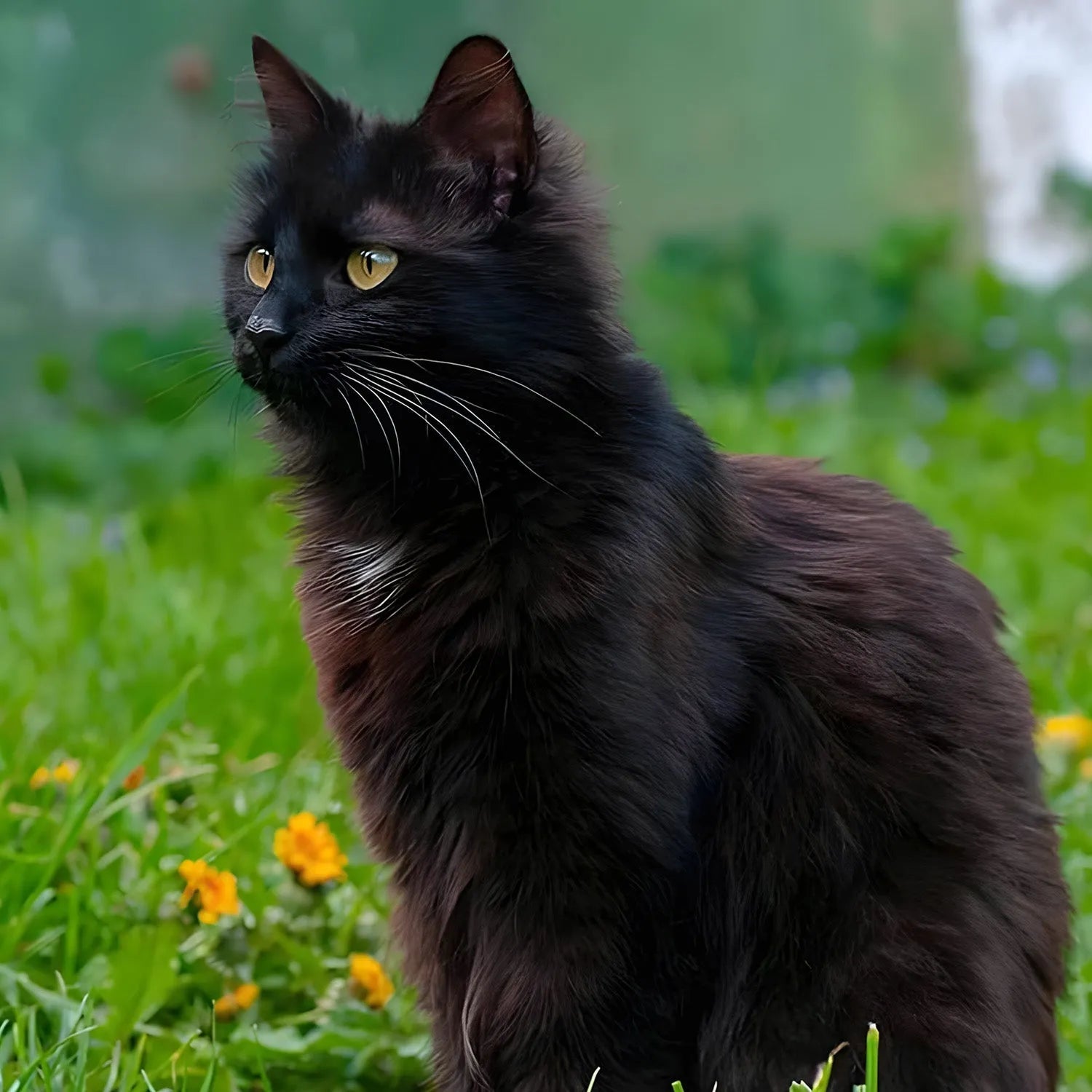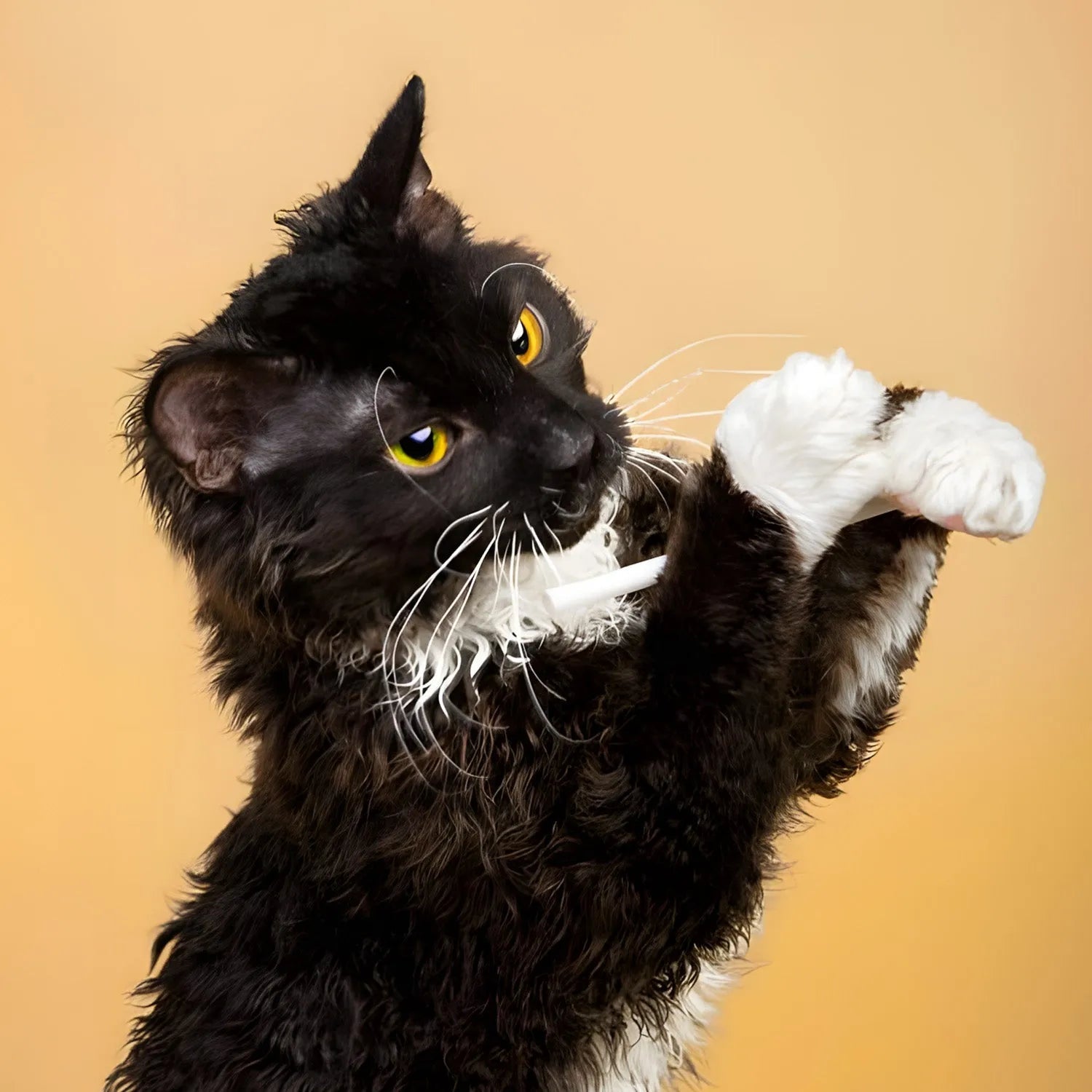Burmese Cat: The Playful and Loving Companion
Introduction
The Burmese cat is an affectionate, playful breed known for its sleek, muscular build and big, expressive eyes. Originating from Southeast Asia, the Burmese cat is cherished for its friendly, dog-like personality and deep bond with its human companions. Whether you’re a family with children or someone seeking a loyal, loving companion, the Burmese might just be the perfect feline for you. In this blog, we’ll explore the Burmese cat’s lifestyle, behavior, grooming needs, trainability, and how it interacts with humans and other pets.
Ratings (1-5)
-
Environmental Adaptability: 5
-
Food Consumption: 4
-
Need for Companionship: 5
-
Trainability: 4
-
Tolerance of Children: 5
-
Ease of Domestication: 5
History and Origins
The Burmese cat breed can trace its roots back to Southeast Asia, particularly Myanmar (formerly Burma). The modern breed, however, was developed in the United States in the 1930s. A small, dark brown cat named Wong Mau was brought to America and became the foundation of the breed when she was bred with a Siamese cat. Through careful breeding, Burmese cats developed their own distinct characteristics, which include their solid, muscular build and rounded features. The breed was officially recognized in the 1950s and has since gained popularity worldwide for its affectionate and people-oriented nature.
Physical Characteristics and Colors
The Burmese cat is medium-sized but muscular and solid, making it heavier than it looks. It has a sleek, short coat that lies close to the body, giving the cat a glossy, polished appearance. The head is rounded, with large, expressive eyes that come in shades of gold or yellow. The ears are medium-sized and rounded at the tips, adding to the overall gentle look of the breed. Burmese cats come in a variety of colors, with the most common being sable (a rich, dark brown), but they are also found in blue, champagne (a light, warm beige), and platinum (a silvery-gray).
Lifestyle and Behavior
Burmese cats are known for their playful and social personalities. They love to be involved in everything their owners do and are often described as "dog-like" in their loyalty and affection. Burmese cats are energetic and playful well into adulthood, making them a perfect match for families with children or active households. They are also incredibly affectionate and will often seek out attention, whether by curling up in your lap or following you from room to room. Burmese cats thrive on human companionship and do not like to be left alone for long periods. Their playful and loving nature makes them a joy to be around, and they form deep, lasting bonds with their human companions.
Trainability and Intelligence
Burmese cats are highly intelligent and can be trained to follow basic commands and perform tricks. They respond well to positive reinforcement, such as treats and praise, and enjoy interactive toys and puzzles that challenge their minds. Burmese cats are quick learners and can be taught to fetch, sit, or even walk on a leash. Their intelligence also makes them highly adaptable to new environments and changes in routine. While they are trainable, their playful and curious nature sometimes leads them to get into mischief, so providing mental stimulation is key to keeping them happy.
Social Behavior and Human Interaction
Burmese cats are extremely social and thrive on human interaction. They form strong bonds with their owners and love to be the center of attention. Burmese cats are known for being particularly affectionate and enjoy cuddling, sitting on laps, and following their owners around the house. They are also quite vocal and will communicate with their owners through soft meows and purrs. Burmese cats are happiest in environments where they can spend plenty of time with their human companions, making them an ideal choice for families or individuals who are home frequently. They do not like to be left alone for long periods and may become lonely or bored if left without companionship.
Compatibility with Children and Other Pets
Burmese cats are excellent companions for children, thanks to their playful and tolerant nature. They enjoy interactive play and are generally patient with children, making them a great match for families. Burmese cats also tend to get along well with other pets, including dogs, as long as they are properly introduced. Their sociable and adaptable nature allows them to integrate well into multi-pet households, and they often enjoy the company of other animals as much as they do humans. Burmese cats are known for their ability to form strong bonds not only with their human families but also with other pets in the household.
Grooming and Care
The grooming needs of a Burmese cat are minimal due to their short, sleek coat. Weekly brushing is usually sufficient to remove loose hairs and keep their coat looking shiny and healthy. Regular dental care, ear cleaning, and nail trimming are also important to maintain their overall health. Despite their low-maintenance grooming needs, Burmese cats enjoy the bonding time that grooming sessions provide, and it can be a great way to strengthen the bond between cat and owner. Bathing is generally not necessary unless the cat gets particularly dirty, as Burmese cats are generally good at keeping themselves clean.
Health and Lifespan
Burmese cats are generally healthy cats, but like all breeds, they can be prone to certain genetic conditions. These may include hypertrophic cardiomyopathy (a form of heart disease) and craniofacial defects, which are more common in some lines of the breed. Regular veterinary check-ups and a balanced diet are essential to maintain their health. With proper care, Burmese cats can live up to 12-16 years or more. Regular monitoring and preventive care are important to ensure a long and healthy life for your Burmese cat.
Environmental Adaptability
Burmese cats are adaptable and can thrive in various living environments, although they are particularly well-suited to indoor living. They are known for their resilience and can adjust well to different climates and household settings. Whether in an apartment or a house, Burmese cats will find ways to entertain themselves and stay active. However, they do best in environments where they can receive plenty of attention and interaction from their owners. Their adaptable nature makes them well-suited to a wide range of living conditions, and they are equally comfortable as indoor cats.
Feeding Requirements
A balanced diet is crucial for maintaining the Burmese cat's health and energy levels. High-quality cat food that is rich in protein is recommended. Fresh water should always be available. Consult your veterinarian for specific dietary recommendations based on your cat's age, weight, and health needs. Monitoring their diet to prevent obesity is essential, as Burmese cats can be prone to overeating if not properly managed.
Conclusion
The Burmese cat is a playful and loving companion that brings joy and affection to any household. Their intelligence, social nature, and sleek appearance make them wonderful pets for families and individuals alike. If you’re looking for a cat that will form a deep bond with you and keep you entertained with its playful antics, the Burmese might be the perfect fit for you.
For more information about other cat breeds and pet care tips, stay tuned to our blog!
References:
-
King, S. (2021). "The Burmese Cat: Playful, Loyal, and Loving." *Journal of Feline Studies*, 35(3), 201-215.
-
Thompson, D. (2020). "Caring for Your Burmese Cat: A Comprehensive Guide." *Cat Lover’s Magazine*, July issue, pp. 30-40.
-
Richards, A. (2019). "Health and Wellness in Burmese Cats." *Veterinary Journal*, 79(2), 123-137.


